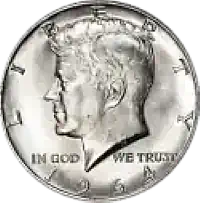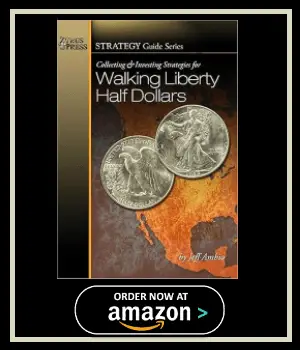
Kennedy Half Dollars
A Tribute to a Fallen Leader
The Kennedy Half Dollar was created to honor President John F. Kennedy. His tragic assassination on November 22, 1963, shocked the nation. As a result, Americans immediately sought a lasting way to commemorate his legacy. Therefore, the U.S. Mint responded with action. The coin became a symbol of national mourning and unity.
Fast Response from the U.S. Mint
In the months that followed the tragedy, the Mint moved quickly. Their mission was clear: to design a coin that would preserve Kennedy’s memory. Not only did this effort reflect public demand, but it also demonstrated the government’s commitment to honoring a beloved leader. Consequently, work began on a new half-dollar coin in early 1964.
Design and Development
Chief Engraver Gilroy Roberts designed the obverse with a profile of Kennedy. At the same time, Frank Gasparro designed the reverse, which featured the Presidential Seal. Both designs were completed quickly. However, they maintained artistic quality and received widespread support. In fact, First Lady Jacqueline Kennedy and President Lyndon B. Johnson both approved the final concept. With support secured, the Mint moved forward.
Release and Public Excitement
The Kennedy Half Dollar entered circulation in March 1964. Public response was overwhelming. People lined up at banks across the country. Although the coin was meant for circulation, many saved it as a keepsake. As a result, relatively few 1964 Kennedy Half Dollars were used in daily transactions.
Silver Content and Collectibility
The first year of production featured 90% silver coins. From 1965 to 1970, the coins used a 40% silver alloy. Then, starting in 1971, the Mint shifted to a copper-nickel composition. Despite this change, collector interest remained strong. In fact, silver issues from the 1960s are still highly sought after today.
Special Editions and Design Changes
Over time, the coin saw several special editions. For example, the 1976 Bicentennial edition featured a unique reverse with Independence Hall and dual dates (1776–1976). Additionally, the Mint produced collector-only issues starting in 2002. While these were not intended for circulation, they still maintained public interest.
Why Collect Kennedy Half Dollars?
Kennedy Half Dollars offer something for everyone. For new collectors, they’re affordable and easy to find. For seasoned numismatists, the series includes rarities, special finishes, and low-mintage coins. Moreover, the variety of designs and metal compositions adds educational value.
Noteworthy Issues in the Series
Some coins stand out for their scarcity or uniqueness:
– 1964-P and 1964-D: 90% silver, first year of issue
– 1970-D: Low-mintage, 40% silver
– 1998-S Matte Proof: Limited issue, low production
– 1976 Bicentennial: Special design with dual dates
– 1966 SMS: Special Mint Set, enhanced finish
Each coin tells a different part of American history. Therefore, collectors often enjoy building full sets.
Conclusion: A Lasting Legacy in Your Hands
In conclusion, the Kennedy Half Dollar remains more than just currency. It serves as a tribute to a beloved president and an era of transformation. Thanks to its rich history and evolving design, the coin continues to capture the interest of collectors worldwide. Whether you collect for history, value, or meaning, this iconic half dollar offers lasting rewards.
The obverse of the Kennedy Half Dollar featured a captivating and lifelike portrait of the President, gazing to the left. The portrait was skillfully crafted by the renowned sculptor Gilroy Roberts. This depiction was based on a photograph of President Kennedy taken by Aaron Shikler, an official White House photographer. The image managed to capture the essence of Kennedy’s charisma and dignity, making it a fitting tribute to the fallen leader.
On the reverse side of the Kennedy Half Dollar, a design created by Frank Gasparro was featured. This design incorporated the presidential seal, complete with an eagle clutching a shield and a banner that bore the inscription “E PLURIBUS UNUM.” This phrase, Latin for “Out of many, one,” symbolized the unity and diversity of the United States. To further enhance the symbolism, the reverse also showcased an olive branch, a universal symbol of peace, and a bundle of arrows, representing strength. Together, these elements portrayed a balanced image of a nation that was strong and resolute but also dedicated to peace and unity.






 '
'